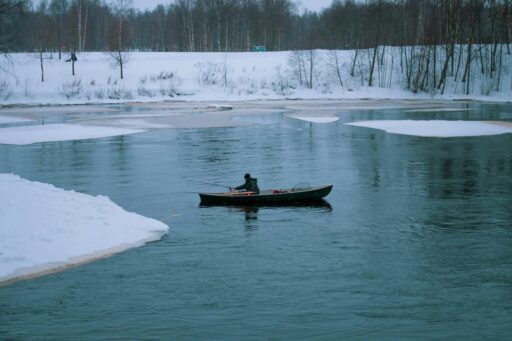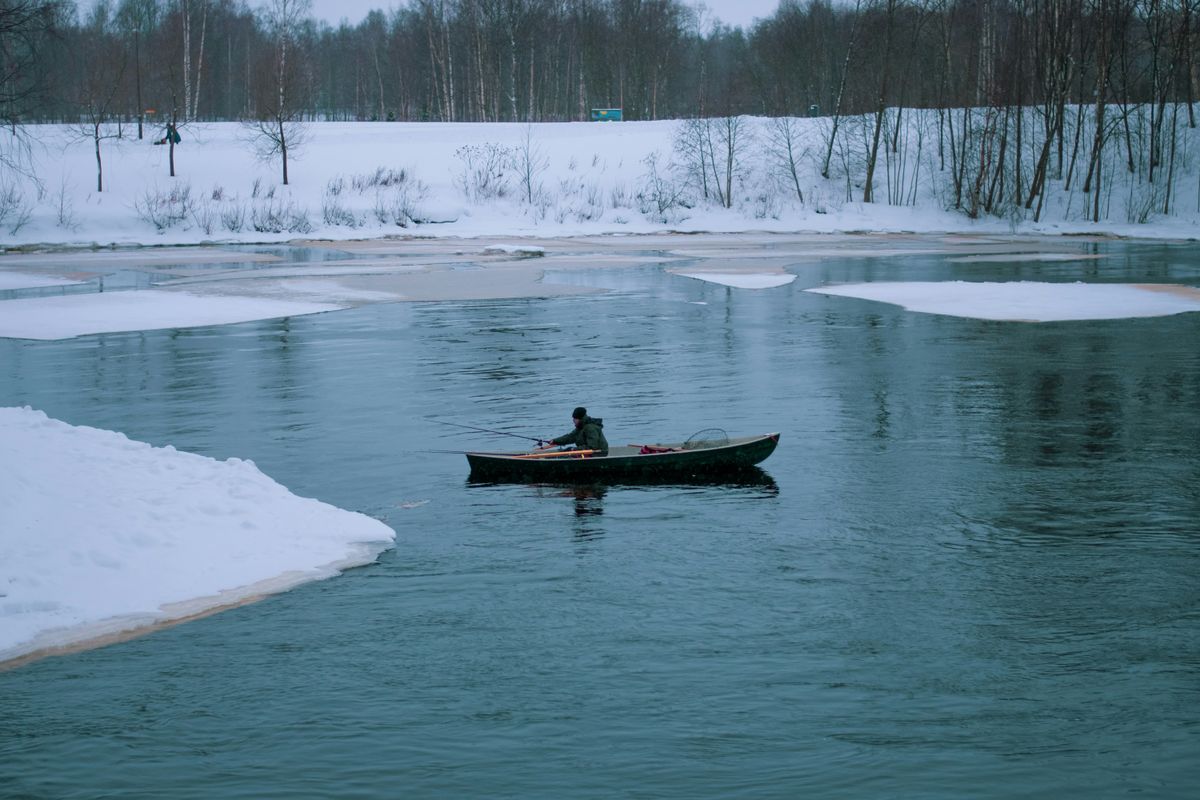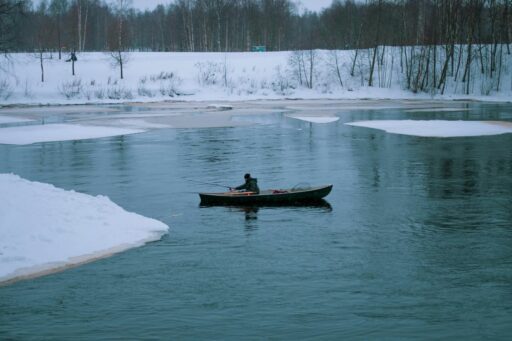Ice fishing is a unique and exhilarating way to fish, but having the right equipment is critical for success. The best ice fishing rod can make a significant difference in your experience and catch rate. This article will provide expert tips to help you choose the best ice fishing rod, taking into account the characteristics of the rod, the reel that complements it, the bait and lures to use, the role of technology in ice fishing, and the importance of safety and preparedness on the ice.
Key Takeaways
- The quality of the ice fishing rod’s material and construction is crucial for durability and performance under extreme conditions.
- Rod length and power should be matched to the specific type of fish you’re targeting and the fishing environment.
- Sensitivity and action of the rod are important factors for detecting subtle bites and effectively setting the hook.
- Choosing the right reel involves understanding the different types and features, and ensuring it balances well with the rod.
- Safety and emergency preparedness are paramount in ice fishing, including knowledge of ice conditions and having the right safety gear.
Understanding Ice Fishing Rod Characteristics

Material and Build Quality
When selecting an ice fishing rod, the material and build quality are crucial for durability and performance. Rods made from graphite are lightweight and highly sensitive, making them ideal for detecting subtle bites. Fiberglass rods, on the other hand, offer more flexibility and are often more affordable. Composite rods combine the best of both worlds, providing a balance between sensitivity and strength.
The construction of the rod also plays a significant role in its quality. Look for features such as stainless steel guides, which resist corrosion, and a solid reel seat that ensures your reel stays firmly in place. High-quality rods may also include ergonomic handles made from materials like cork or EVA foam for comfort during long fishing sessions.
It’s important to consider the type of fishing you’ll be doing and the species you’re targeting when choosing the material and build quality of your ice fishing rod. A well-constructed rod can enhance your fishing experience and increase your chances of a successful catch.
Rod Length and Power
When selecting an ice fishing rod, the length and power are crucial factors that directly impact your fishing experience. Rod length can vary significantly, typically ranging from 24 to 36 inches. Shorter rods are ideal for fishing in tight spaces, such as inside an ice shelter, while longer rods allow for better control and longer casting distances when fishing in open areas.
The power of the rod, which refers to its lifting strength, is categorized from ultra-light to heavy. Ultra-light rods are perfect for small panfish, whereas heavy rods are suited for larger species like pike or lake trout. It’s important to match the power of the rod with the targeted fish species and the size of the bait or lure being used.
Matching the right combination of rod length and power to your fishing style and target species is essential for optimizing your chances of a successful catch.
Here’s a quick reference guide to help you choose the right rod for your next ice fishing adventure:
- Ultra-light: Best for panfish; use with light lines and small jigs
- Light: Ideal for crappies and perch; compatible with light to medium lures
- Medium: Versatile for various species; good with a range of lure sizes
- Medium-heavy: Suitable for walleye and small pike; use with larger lures
- Heavy: Designed for large pike and lake trout; pair with heavy lures and baits
Sensitivity and Action
When selecting an ice fishing rod, sensitivity and action are crucial for detecting bites and properly presenting baits. A rod’s action determines how much of the rod bends when pressure is applied. Fast action rods bend primarily near the tip, while slower actions involve more of the rod’s length. This affects how you impart action on the bait and can influence the success of techniques like drop shotting.
- Fast action rods are ideal for techniques that require subtle movements without displacing the bait too much.
- Moderate action rods offer a balance, suitable for a variety of lures and conditions.
- Slow action rods are more forgiving and better for beginners or when using live bait.
The right combination of power and action in a rod can make a significant difference in your ice fishing experience. It’s not just about the strength but also how the rod transmits vibrations and responds to the fish’s movements.
Understanding the nuances of rod action will help you choose a rod that matches your fishing style and the species you’re targeting. Remember, the goal is to have a rod that allows you to feel the bite and react promptly, ensuring a successful hookset.
Selecting the Right Reel for Your Ice Fishing Rod

Reel Types and Features
Choosing the right reel is crucial for a successful ice fishing experience. Spinning reels are popular for their ease of use and versatility, while inline reels offer a more direct line feed, reducing line twist. Wall mount reels and tip-ups provide unique setups for specific fishing techniques, and palm rods cater to those seeking a minimalist approach.
- Spinning Reels: Ideal for beginners and versatile fishing.
- Inline Reels: Best for reducing line twist and precise jigging.
- Tip-ups: Allow for multiple lines in the water.
- Palm Rods: For the angler who prefers a hands-on feel.
When selecting a reel, consider the type of fish you’re targeting and the conditions under which you’ll be fishing. The right reel enhances your control and sensitivity, making it easier to detect bites in the frigid environment.
Maintenance is key to reel performance. Regularly check for wear and tear, and clean your reels after each use to prevent freezing and corrosion. Remember, the best ice fishing reels of 2023 have been reviewed, including various types such as spinning, inline, and wall mount ice reels, as well as tip-ups and palm rods.
Matching the Reel to the Rod
When selecting a reel for your ice fishing rod, it’s crucial to ensure that the reel and rod are compatible in terms of size and balance. A well-matched rod and reel combo will enhance your fishing experience by providing better control and sensitivity. Consider the weight of the reel and the type of fishing you plan to do; a heavier reel might be suitable for larger fish, while a lighter reel could be better for smaller species and finesse techniques.
- Spinning Reels: Ideal for lighter lines and lures; offer easy casting.
- Casting Reels: Best for heavier lines and lures; provide more precision.
- Inline Reels: Designed for ice fishing; reduce line twist and offer a more direct feel.
It’s important to balance the reel with the rod to prevent fatigue and maintain accuracy during long hours on the ice. A mismatched setup can lead to poor performance and discomfort.
Remember to lubricate your reel with light oil regularly to ensure smooth operation. Additionally, always choose the right rod and reel combo based on the fish size and location to maximize your chances of a successful catch.
Maintenance and Care Tips
Proper maintenance of your ice fishing rod ensures its longevity and performance. Wipe down your rod with a soft, damp cloth after each use, focusing on areas like the guides and reel seat where dirt and grime accumulate. Regularly check for any signs of wear or damage, especially before embarking on a fishing trip.
- Inspect the rod for cracks or fractures.
- Ensure the guides are not bent or have rough edges that could damage the line.
- Lubricate the reel and check for smooth operation.
- Store the rod in a cool, dry place away from direct sunlight.
By adhering to these simple care tips, you can prevent common issues and extend the life of your ice fishing rod. Remember, a well-maintained rod is a reliable partner on the ice.
The Role of Bait and Lures in Ice Fishing Success

Bait Types and Their Applications
Choosing the right bait is crucial for ice fishing success. Live baits such as minnows are highly effective for attracting a variety of fish species under the ice. They mimic the natural prey of fish, making them irresistible targets. For trapping minnows, which make excellent live bait, it’s important to select the perfect bait that will entice them into your trap.
When targeting specific species like smallmouth bass, lure and bait selection becomes even more critical. Experienced anglers often use a combination of live baitfish, soft plastics, and crankbaits to maximize their chances of a catch. Spinnerbaits are particularly favored for their ability to attract the highly-prized bass.
Understanding the effectiveness of different lures is essential. A website page emphasizes the importance of using the right lure for specific fish species to maximize results.
Below is a list of common bait types and their typical applications in ice fishing:
- Live Bait: Minnows, waxworms, and maggots for a natural presentation
- Artificial Lures: Jigs, spoons, and spinnerbaits for active fish
- Soft Plastics: Mimic live bait and can be used in various conditions
- Hard Baits: Crankbaits and lipless rattle baits for aggressive fish
Each type of bait has its own set of advantages and can be used strategically depending on the behavior of the fish and the conditions of the ice.
Choosing Lures for Different Fish Species
Selecting the right lure is crucial for targeting specific fish species through the ice. Jigs are standard lures in ice fishing, but it’s important to match the size and type to the fish you’re after. For instance, smaller jigs like the Slider and Forage Minnow are excellent for perch and panfish, while larger, more aggressive lures may be needed for predatory species such as walleye or pike.
When fishing for trout, which are known for being selective eaters, the choice of lure can be the difference between success and frustration. Experimenting with different colors and movements can help entice these finicky fish.
For smallmouth bass, a mix of live baitfish, soft plastics, and crankbaits can be effective. Largemouth bass, on the other hand, may respond better to a variety of artificial and natural baits, including topwater lures. Always consider the behavior and diet of the fish when choosing your lure, and don’t hesitate to switch things up if you’re not getting bites.
Innovative Bait and Lure Strategies
In the world of ice fishing, innovation can be the key to a successful catch. Experimenting with different bait and lure combinations can lead to surprising results, as fish often respond to novel presentations. For instance, combining traditional live baits with modern synthetic attractants can enhance their effectiveness, especially when targeting wary fish under the ice.
- Live bait: Minnows, waxworms, and maggots are staples for ice fishing, offering natural movement and scent.
- Synthetic attractants: These can include scented gels or pastes applied to lures or live bait to increase their appeal.
- Hybrid approaches: Mixing live and artificial baits can create a unique presentation that may intrigue fish.
Embracing a mix of old and new techniques can often yield the best results. Don’t be afraid to try out different combinations and see what works best for the species you’re targeting.
Remember, the goal is to mimic the natural prey of the fish as closely as possible. This might mean adjusting your strategy based on the time of day, water clarity, and fish behavior. Keeping a log of what works—and what doesn’t—can help refine your approach over time.
Incorporating Technology for Enhanced Ice Fishing

Essential Electronics for Ice Anglers
In the world of ice fishing, embracing technology can be the difference between a good day on the ice and a great one. Essential electronics have revolutionized the way anglers approach this winter sport. From sonar units to GPS devices, the right tools can help you locate fish, understand the underwater environment, and even track your success over time.
- Sonar Units: Provide real-time views of what’s below the ice, revealing fish locations and movements.
- GPS Devices: Help you navigate and mark productive fishing spots.
- Underwater Cameras: Offer a direct view of the aquatic world, allowing for precise bait placement.
- Digital Fish Scales: Enable accurate recording of catch sizes for personal records or fishing contests.
By integrating these devices into your ice fishing arsenal, you can enhance your efficiency and effectiveness on the ice. While traditional skills remain important, the use of electronics can provide a significant edge in finding and catching fish.
Remember, the key to successfully incorporating technology is to ensure that it complements, rather than complicates, your fishing experience. Choose electronics that are user-friendly and suited to the specific conditions you’ll be fishing in. Maintenance and proper care will also extend the lifespan of your devices, ensuring they’re ready when you need them most.
How Technology Improves Fish Locating
The advent of modern technology has revolutionized the way anglers approach ice fishing, particularly in the realm of fish locating. Sonar technology, for instance, has become an indispensable tool for ice anglers. By emitting sound waves and interpreting their echoes, sonar devices provide real-time information about the underwater environment, including the presence and movement of fish.
- Flashers offer a simple yet effective display of what’s beneath the ice, showing fish as they move into the sonar beam.
- GPS-equipped devices not only help in locating fish but also in marking successful fishing spots for future reference.
- Underwater cameras give a visual insight into the fish’s behavior, allowing anglers to fine-tune their techniques.
Embracing these technological aids can significantly increase the chances of a successful catch, making the time spent on the ice both more productive and enjoyable. While some purists may prefer the traditional methods, the benefits of using technology in ice fishing are hard to ignore.
Balancing Tradition with Technological Advances
While the essence of ice fishing remains rooted in tradition, the integration of modern technology has undeniably transformed the sport. The evolution of ice fishing is not just about adopting new gadgets; it’s about enhancing the angling experience while respecting the past. For many, this means finding a balance between the time-honored methods and the conveniences of contemporary tools.
The key is to leverage technology in a way that complements, rather than overshadows, the fundamental skills of ice fishing.
Here are some considerations for blending tradition with technology:
- Utilize electronics for efficiency, but don’t rely on them exclusively.
- Embrace advancements in safety equipment to protect the timeless joy of the sport.
- Introduce new anglers to the basics before integrating high-tech devices.
- Remember that patience and observation remain at the heart of successful ice fishing.
Safety and Preparedness on the Ice

Essential Safety Gear for Ice Fishing
When venturing onto the ice, safety should be your top priority. Always equip yourself with the necessary safety gear to ensure a secure and enjoyable ice fishing experience. A comprehensive safety kit can be the difference between a minor inconvenience and a life-threatening situation.
- Ice Chisel: To check ice thickness.
- Ice Picks: For self-rescue in case of falling through.
- GPS: To navigate and mark safe routes.
- Ice Cleats: For stable footing on slippery surfaces.
- VHF Radio: For communication and emergency calls.
- Rope Throw Bag: For rescuing others without compromising your own safety.
- Float Suit: Provides buoyancy and insulation.
Remember, no fish is worth risking your life. Before stepping out, make sure you have all the essential gear and know how to use it effectively.
Preparing for Emergencies
When ice fishing, being prepared for emergencies is crucial for your safety. Always carry a well-stocked first-aid kit that includes items for treating cuts, hypothermia, and frostbite. It’s essential to have a plan in place for rapid evacuation in case of severe weather or ice instability.
In addition to a first-aid kit, ensure you have emergency signaling devices such as whistles and flares, and know the symptoms of frostbite and hypothermia to act quickly if they occur.
Here is a list of emergency items you should have:
- First-aid kit with bandages, antiseptic, and thermal blankets
- Emergency signaling devices (whistles, flares)
- Waterproof matches and fire-starting materials
- Extra clothing and hand warmers
- High-energy food and water
- A list of emergency contacts and local rescue services
Remember, your safety depends on your preparedness. Regularly check your emergency supplies and replenish them as needed. Stay informed about the weather and ice conditions, and never fish alone.
Understanding Ice Conditions and Risks
When venturing out for ice fishing, understanding and assessing ice conditions is crucial for your safety. Always check the thickness of the ice as you go, and be mindful of areas where currents may cause the ice to be thinner and less stable. It’s important to recognize that ice thickness can vary even over a short distance, and clear ice is generally stronger than cloudy or white ice.
Ice safety is not just about thickness; it’s also about the quality and consistency of the ice. Before stepping out, use a spud bar to test the ice in front of you, and if you encounter slushy areas, it’s a sign to proceed with caution or choose another spot.
Remember, no ice is 100% safe. If you are uncertain about the conditions, it’s better to err on the side of caution and select a different waterbody for fishing. Here’s a quick reference guide for minimum ice thickness:
- 4 inches: suitable for ice fishing or other activities on foot
- 5 inches: can support a snowmobile or ATV
- 8-12 inches: safe for a car or small pickup
- 12-15 inches: adequate for a medium truck
By following these guidelines and staying informed about local weather and ice conditions, you can enjoy a safe and successful ice fishing experience.
Conclusion
As we wrap up our guide on selecting the best ice fishing rod, remember that the right choice can significantly enhance your experience on the ice. From understanding the nuances of ice fishing line to considering the latest technological advancements in ice fishing gear, every detail matters. Whether you’re a seasoned angler or just starting out, prioritize a rod that suits your style and the specific conditions you’ll face. Safety should always be paramount, so equip yourself with knowledge and the proper tools to stay safe while enjoying the serene beauty of ice fishing. Share your winter catch stories and tips with fellow enthusiasts, and let’s continue to celebrate the joys of this unique winter sport.
Frequently Asked Questions
What are the key characteristics to look for in an ice fishing rod?
When choosing an ice fishing rod, consider the material and build quality for durability, the rod length and power suitable for the species you’re targeting, and the sensitivity and action for detecting bites in cold conditions.
How do I match a reel to my ice fishing rod?
Select a reel that balances well with your rod in terms of size and weight. Ensure it has the appropriate gear ratio for your fishing technique and is made of materials that can withstand cold temperatures.
What types of bait and lures work best for ice fishing?
The best bait and lures depend on the target fish species. Generally, live bait like minnows or waxworms is effective, as well as jigs, spoons, and soft plastics designed for ice fishing.
How can technology enhance my ice fishing experience?
Technology such as fish finders, GPS, and underwater cameras can significantly improve your ability to locate fish, understand underwater structures, and monitor your bait, thus increasing your chances of a successful catch.
What safety gear should I bring for ice fishing?
Essential safety gear includes ice picks, a flotation device, cleats for traction, a whistle for emergencies, and warm, waterproof clothing. Always check ice thickness and carry a spud bar to test ice stability as you move.
How do I prepare for emergencies while ice fishing?
Prepare for emergencies by informing someone of your fishing location and expected return time, carrying a fully charged mobile phone, packing a first aid kit, and being aware of the symptoms and first-aid treatment for hypothermia and frostbite.





